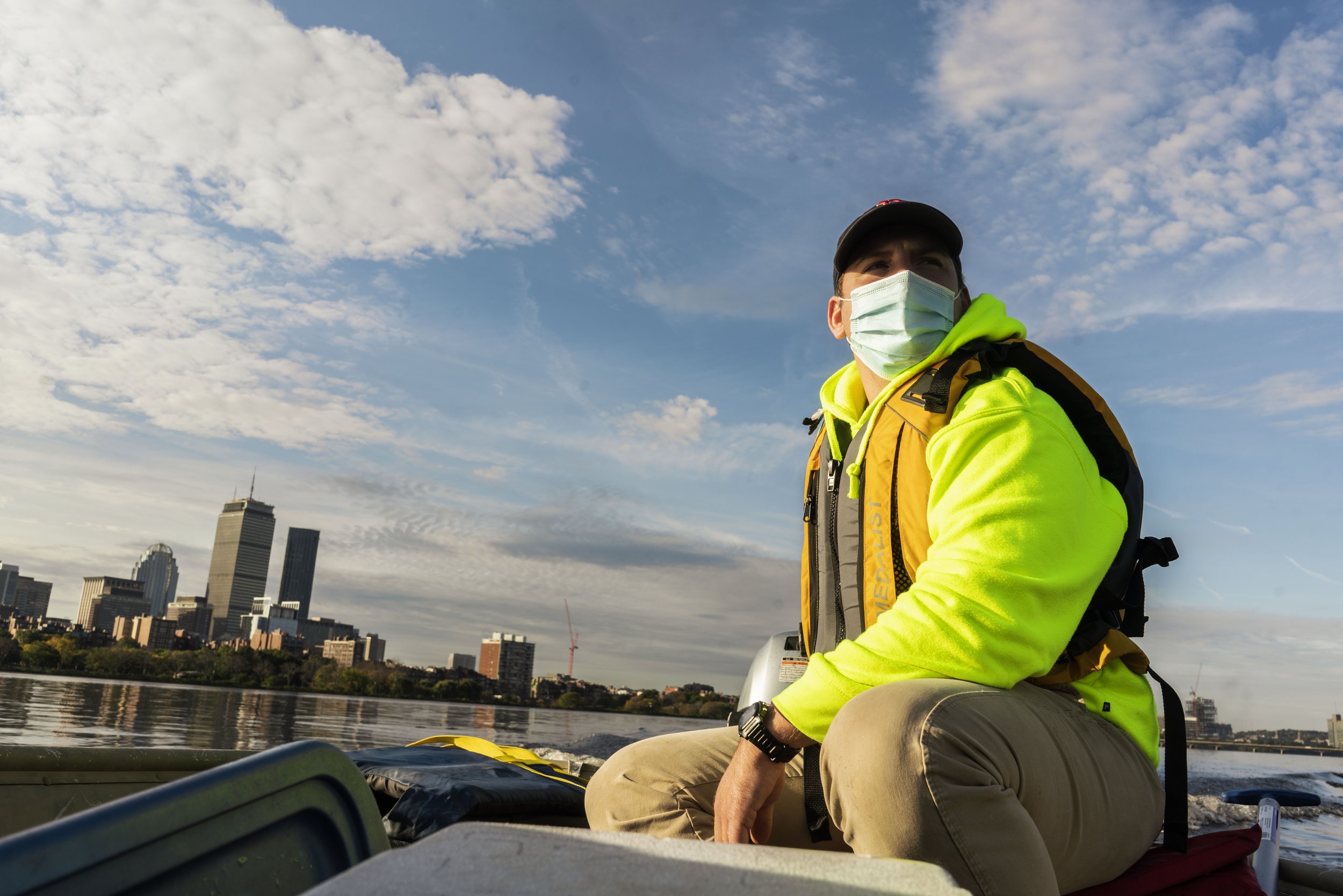
FLAGGING PROGRAM
Water quality alerts for safe recreation.
2024 Flagging Program Report:
What did water quality look like in 2024?
Each year, CRWA analyzes data collected through the Flagging Program to track the long-term health of the Charles River. 2024 was a particularly dry season with only approximately 16 inches of rainfall. Despite this below average amount of precipitation during the Flagging Program season, the greatest threats to safe recreation were CSOs and increased stormwater runoff.
Meet the Flagging Program:
The Flagging Program provides live water quality alerts through a system of color-coded flags to indicate whether or not the Charles River is safe for recreation at thirteen locations from Watertown to Boston.
Where can you find updates? Check our website, sign up for email notifications, and look for physical flags flying on the river at twelve participating boathouses.
What do the flags mean?
Flag color is determined by three indicators––– E. Coli bacteria, Cyanobacteria blooms, and Combined Sewer Overflows. When one of these public health concerns is present, we fly red flags to advise the public to avoid contact with the river.
BLUE FLAGS mean the river is safe for recreation.
RED FLAGS mean there are public health risks.
If Red Flags Are Flying, Decide if Boating is Right for You.
RED FLAGS indicate bacterial contamination levels are likely high, and some may decide to skip boating on the river.
If you do go out, take precautions to stay safe:
Avoid all contact with the water.
Wash or shower with clean water as soon as possible after boating.
Avoid eating and drinking on the water.
HIGH E. COLI BACTERIA LEVELS OCCUR AFTER STORMS. When levels predicted by CRWA’s water quality models exceed state recreational water quality standards, red flags are flown at affected boathouses. Exposure by contact with water on skin, open cuts, or by ingesting water can cause infections, gastrointestinal distress, and more serious conditions.
COMBINED SEWER OVERFLOWS RELEASE SEWAGE INTO THE RIVER DURING HEAVY STORMS. Red flags fly at boathouses downstream of a CSO discharge for 48 hours. CSOs can carry bacteria, viruses, pharmaceuticals, trash, and PFAS straight into the river, and exposure can be very dangerous for human health.
HARMFUL CYANOBACTERIA BLOOMS OCCUR WITH HIGH TEMPERATURES AND POLLUTION. Red flags will fly for the duration of the bloom. Exposure can cause skin rashes, irritation of the nose, eyes, and throat, gastrointestinal distress, dizziness, headaches, fever, and more serious liver damage and neurological conditions in humans. Cyanobacteria can also be fatal to pets.







